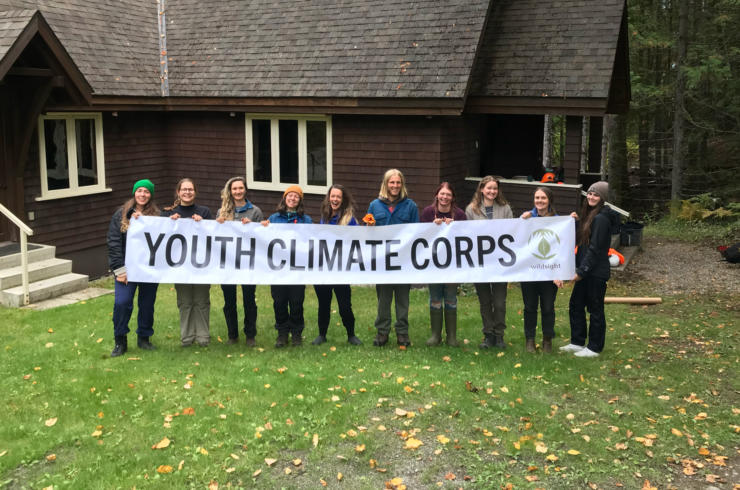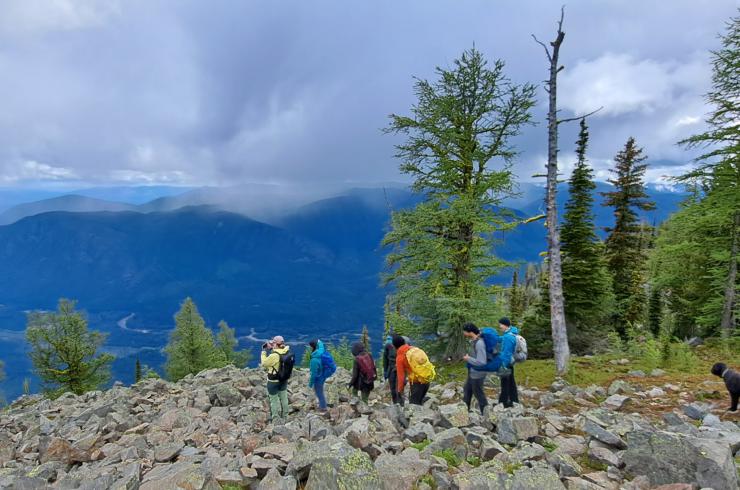Lois Creek is a much loved little stream that trickles its way through Kimberley. This humble waterway holds a surprisingly rich history of local innovation and human expansion. But years of human interference have left its mark on this small aquatic system. Now, Wildsight’s Youth Climate Corps (YCC) is part of the collaborative team working to understand the balance of this ecosystem, and how to make it a healthier habitat for native species to thrive.

Lois Creek is a tributary to Mark Creek, which then flows into the St. Mary River. At one time, westslope cutthroat trout (a blue-listed species of concern in British Columbia) lived in Lois Creek. But Marysville Falls (downstream of Kimberley) now forms a natural barrier to fish passage, preventing genetic mixing with upstream populations. It’s likely that westslope cutthroat trout found in the upper reaches of Mark Creek, and in turn Lois Creek, were present when these falls were either not here, or when ice and snow created passage that provided the connectivity necessary for fish to pass up into the community.

Human alterations to the creek as a result of logging, mining and community building have left a legacy of impact on the stream system, including some partially clogged culverts that restrict stream flow and fish passage. Also, at some point (likely when Lois Creek was dammed for local power generation), the creek was stocked with brook trout, a non-native fish species.
It has long been a vision of many locals to rectify some of these human impacts on Lois Creek. In 2021, Wildsight partnered with Friends of Lois Creek to execute a multi-year project with two primary goals: re-naturalize a small reach of Lois Creek where the legacy of human activities is inhibiting the natural flow of the system, and gain a clear understanding of current fish populations and distribution within the system.
Armed with electrofishing gear and a sense of anticipation surrounding the unknown, the 2023 Kimberley Cranbrook YCC crew, along with Ryan MacDonald of MacHydro and Mike Robinson of Lotic Environmental, spent a day this fall sampling the fish population in Lois Creek to uncover whether the creek’s cutthroat trout population was still viable. Results were conclusive: brook trout have taken over.
“Brook trout are generally a more aggressive species,” says Mike. “They have the ability to outcompete cutthroat for food and habitat at critical life stages.”
It appears cutthroat trout are now likely extirpated (locally extinct) in Lois Creek.
“It is a bit disappointing for us. We really wanted to discover that the cutthroat population was still doing well here,” says Tim Chapman, YCC Program Manager in Kimberley. “Given their conservation status, small populations such as those that used to exist in Lois Creek are critical for preserving genetic diversity on a landscape or watershed scale.”
In 2024, a full survey of Lois Creek will take place to document and record fish populations throughout Lois Creek from Morrison Sub all the way to Lois Lake. Our Kimberley Cranbrook YCC crew, along with our partners, will also remove undersized and partially plugged culverts, complete trail reroutes, and plant hundreds of locally sourced and locally grown plants to restore the creek system.
“Sure, we didn’t find exactly what we wanted in the system, but it is still so important that we return the stream to its natural state and morphology,” Tim says. “The work we are planning will benefit water attenuation, provide wintering habitat for the current populations of fish, increase terrestrial diversity and richness of plant species, and reduce the human footprint on the landscape in our work area.”

This project was undertaken with the financial support of:
Ce projet a été réalisé avec l’appui financier de:


Youth Climate Corps








